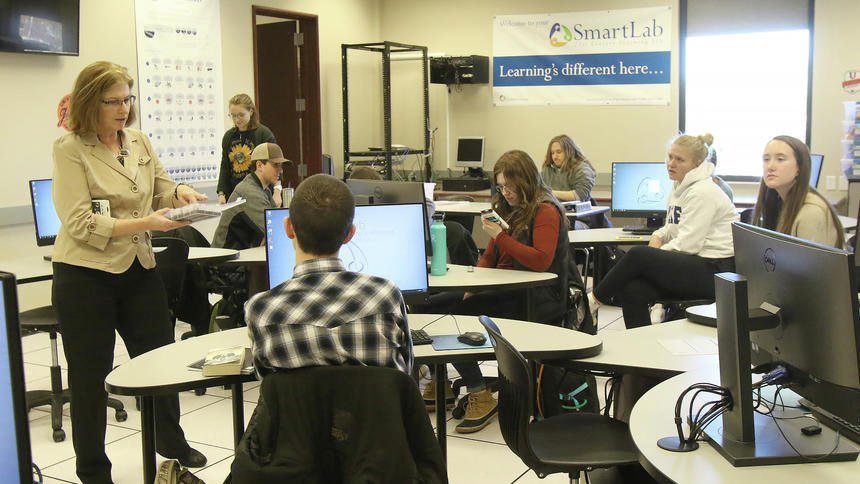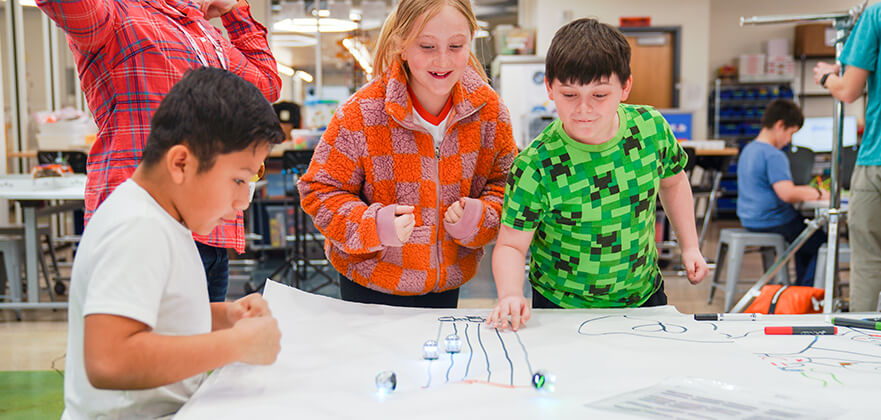How I Stopped Being a Teacher
When I became the facilitator of our high school SmartLab, I mourned the fact that I had to leave the classroom. I mean, I loved being a teacher—in fact, I’d been named teacher of the year on two different occasions during my tenure as a biology teacher.
But when I entered a SmartLab, I had to completely change the way I thought. I’d catch myself saying, “no” to students or asking them if they were working on what I’d asked them to be doing.
But after four months, I finally realized that my typical way of “teaching” isn’t what the SmartLab is about.
The moment came when I sat next to a kid who was just sitting there. I had seen this hundreds of times—I called it “doing nothing.” As I was about to kick my sarcasm into high gear, I decided to take the higher road and ask him what he was doing.
In my delight, we found ourselves in a conversation. I found myself collaborating with him, talking about his ideas—not mine—about all of the stuff he’d been thinking about when I thought he was ‘just sitting there doing nothing.’
Afterwards, I thought, “This was my best teaching day ever.”
Whether you’re transitioning from teacher to facilitator, or simply want to remember why you started teaching in the first place, give these three strategies a try:
- Let students take the lead—even when it’s hard. By the time some kids get into my class, they’ve spent 10+ years learning exactly what they need to do to get an A, so SmartLab Learning can be frustrating for them.
When one of these students asks me what they need to do to get a good grade, I’ll say, “You have to tell me what you’re going to do. I’ll help you chase your idea, but I’m not going to tell you what that idea should be.” - Facilitate your students’ success—don’t do it for them. Some of my students decided to 3D print a soccer ball so I asked them to give me a plan.
I was dubious but they started designing and printing the pentagon shapes that form a soccer ball. When they put the pieces together, they quickly realized it was too rigid. I thought this was the end, but they wanted to keep going.
I see my role as someone who gives students a goal that refills their gas tank so they can keep on chasing their idea. I’d watched them research, design, build, and collaborate—they’d followed the three-before-me rule—but they were stuck. So I suggested if they could find some elastic filament I would buy them a cheap 3D printer so they could continue their idea.
Shortly after, the students found an experimental filament, and I purchased a low-cost printer using money donated from the community. The students assembled the printer, fine-tuned the printing, and began producing the parts for a more flexible soccer ball! - Make open-ended activities the norm—and don’t be surprised where they go. A couple of students wanted to learn how solar panels work and what they needed to do to not only store the energy but to use that energy to run streetlights.
They began the project by collaborating with a nearby Amish community that was doing really cool STEM stuff. The students met with the people in the Amish community who were charging golf carts and lithium batteries and running high-end coolers, a tire garage, and farm equipment all off solar panels.
Through this collaboration, the students learned about lithium batteries, how to set up the panels, and were able to ask about mistakes the farmers had made and how they’d do it differently.
The kids initially wanted to work on the project so they could light streetlights at a school in Ethiopia; however, like any open-ended idea, it turned into something completely different.
The students will end up submitting a proposal to the administration to install solar panels that would compensate for the energy we use in the SmartLab each year.
Whether you’re a 20-year veteran teacher like me, or just completed your first year in the classroom, learning to change the way you teach can be painful. But when I realized that my role was to encourage a student, instead of trying to get them to do an assignment, my perspective changed and transitioning to being a facilitator became the most fulfilling teaching I’ve done.




